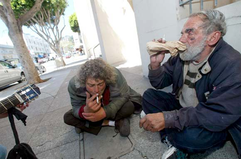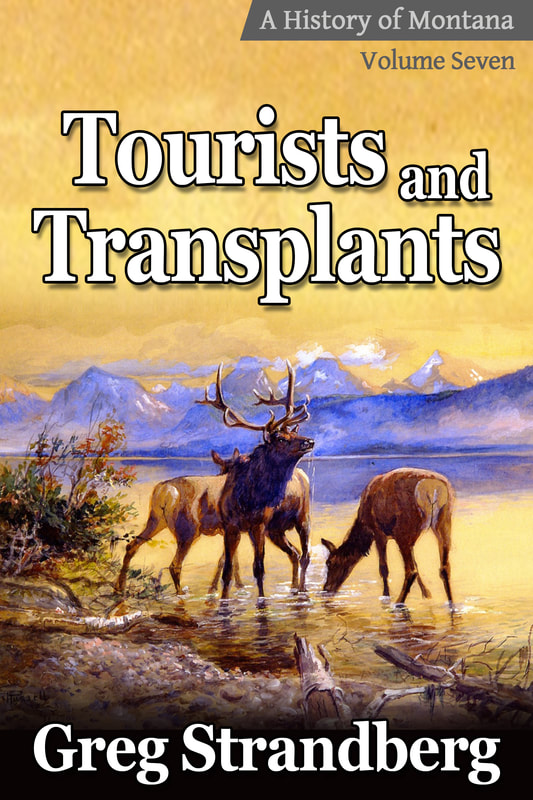
From 2009 to 2011, for instance, the homeless population in America decreased by 1%...but in Montana it increased by 48%.
In the midst of a depression and ever-increasing local taxes, Missoula decided to step up.
In 2012 the City of Missoula put out its 48-page 10-Year Plan to End Homelessness.
Page 10 of that PDF is where you'll get the above stat about Montana's increase.
Missoula was following on the heels of 350 other cities that had done similar plans, as well as the State of Montana – which put a plan out in 2006 – and the City of Billings – which put a plan out in 2009.
The report tells us that “on any given day, at least 200 people are homeless in Missoula.”
We’re also told that less than 25% of those people are “chronically homeless,” though they use about 50% of the resources directed to the homeless problem.
So we’re now halfway into this 10-year plan, and I have to wonder…how are we doing?
Not good.
'"Now five years into the 10-year endeavor, Reaching Home coordinator Theresa Williams said the plan has shown no measurable effect on the homeless population."'
Ouch.
In June 2017 ABC Fox Montana reported that the Executive Director of Missoula’s homeless shelter – the Poverello Center – was just then “helping form a plan with other centers in Missoula.”
Missoula still had 400 homeless people in 2016, according to a national survey.
Wow…5 years after trying to end homelessness in Missoula, the city actually increased it by 200%!
In a May 2016 University of Montana report called “Health and the Homeless Population of Missoula: ‘Housing First’ as a Solution” we were told that 0.75% of Missoula’s population is homeless.
That comes out to 533 people.
Sorry, Missoula has increased its homeless population by 265%
5 years into the city’s plan and they’ve actually increased the number of homeless…the exact opposite of their plan.
What in the hell happened?
I mean…I thought our second Great Depression was over.
Isn’t it?
I thought we had a workforce shortage, with employers scrambling to find workers.
Is that not the case?
I thought we were building new affordable houses for people to live.
Uh…ain’t happening?
WTF?!?
Oh…I think I know!
The City of Missoula went at the 10-year plan to end homelessness much like it goes at everything else – half-assed and backwards.
But maybe that was the point.
I mean, if we have more homeless people in Missoula we’ll get more federal grants to deal with them, agencies will have more money to play with, and the nonprofits that cater to them will an increased justification for their existence…and for more calls for you to donate.
Someone’s making money off Missoula’s homeless problem.
And when you look at it like that, getting more homeless people to Missoula is seen as the ideal.
The main action strategies for Missoula’s plan to end homelessness were to do homeless prevention and rapid re-housing.
To do that the city hired staff, developed a funding pool, initiated regulatory reform to create more affordable housing, prioritized resources to focus on mentally ill and chemically dependent folks, and made recommendations to governing bodies concerning funding.
Funding is the main issue, both because it helps the homeless and it often helps local governments get extra grant funding.
And in Missoula, we need that funding bad!
“I know a guy that we’re spending at least $60,000 a year on,” Travis Mateer said, then the director of the Poverello Center’s Homeless Outreach Team and now a call center specialist with Missoula Aging Services.
Mateer is referring to a man named Murray Barr, “an ex-Marine” that typically “would go on a bender, get picked up by the police, go through detox, and then, when released a few hours later, pick up where he left off.”
One of the City of Missoula’s biggest goals is to provide free housing to people like Barr.
We call this wet housing, and the idea is that if we continue to enable an alcoholic’s drinking by providing them free room and board, they’ll see the light and stop drinking.
“We romance them to death but don’t coerce them into using services,” an EMT said in a 2009 report called “Wet Housing: an accommodation option for people who have experienced chronic homelessness and long-term alcohol dependence.”
In fact, in one wet housing facility that the report’s author visited she said, “Staff were open with me that there are also some residents who are ‘drinking themselves to death.’”
This is justified by saying that “the dangerous lifestyles and bad health of service users means that deaths are unfortunately an inevitable part of providing low-threshold accommodation.”
“There were occasional stories of a resident dying on-site from alcohol poisoning after a big binge.”
Missoula already has a helluva problem with inmates dying in its jails. Do we need alcoholics dying in its wet housing units too?
I don’t think so.
The cost is enormous and the success rates are low.
In San Francisco, for instance, they spend $13.5 million each year to care for just 225 chronic homeless alcoholics.
That’s $60,000 per drunk.
Well gosh…according to Mateer we’re spending that already!
Of course, not everyone abuses the system.
The UM report tells us that those placed in “permanent supportive housing” often see their alcohol consumption fall by 33%.
Then there are the health costs, which homeless people can never pay for. St. Patrick's Hospital, for instance, provided $4 million for this in 2012.
It doesn’t help that 70% of them have an STD. Drinking and hepatitis? Those don’t go too well together.
Front-line workers in the homeless industry and the healthcare industry often complain about the constant health-related problems that homeless people face…and typically bring on to themselves.
Despite this, nothing ever changes.
There is no tough love for these homeless drunks, just more assurances that everything will be alright if they just try harder.
And they do try harder, drinking more today than they did yesterday.
People can stay at the Pov for 45 days with a 20-day extension given in some cases.
So 65 days that they can eat three squares a day and sleep in a free bed…if they’re not too drunk to get inside.
And if they are they can just go sleep down by the river, get up in the morning to do some panhandling, and get that first beer by 9 AM.
Hey, lunch at the Pov is only three hours away at that point!
Get a free fill-up for the stomach, hit the downtown sidewalks to accost people for change, and pretty soon you’re onto the second or third or fourth tall can of the day.
And that’s just Day 1!
The Pov is happy to accommodate you and your lifestyle for another 44 days, maybe 64!
Oh yes…homelessness is a big problem in Montana.
Just not as big as homeless people drinking.

